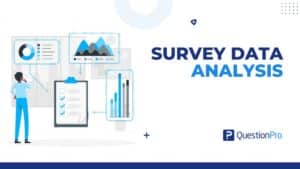
You’re reading a blog post from someone in the market research industry. Everything’s fine until you hit the market research lingo like, “Take the top two top-box minus the bottom box and you have your PSAT score.” What was that
Market research terms you need to know
For beginners in the market research industry, whether you’re a small business owner just trying to figure out your first survey or a new market research analyst, some of the lingo can be a little overwhelming. Every industry suffers from its own version of L33T 5P3Ak (leet speak, in this case defined as verbiage that can be difficult to interpret). Here are some commonly used terms and their definitions.
- Quant. Quantitative. Refers to quantitative research, or traditional research in which answers are coded as numbers and then analyzed statistically.
- Qual. Qualitative. While it might seem like market researchers see this as the opposite of quantitative research, it’s not. Qualitative research takes the form of open-ended questions, data gathered from focus groups, anything that focuses on gathering stories from respondents as opposed to ratings, etc.
- QRE. Questionnaire, or the thing made up of questions that you deliver to a group of people in hopes they’ll answer.
- Respondents. The people who answer a questionnaire.
- Completes. Responses counted as someone having finished the entire questionnaire.
- Incompletes. Responses counted as someone NOT having finished the entire questionnaire. Incompletes can come from people stopping anywhere along the way and just not reaching the magical “submit” or “finish” button at the end of the questionnaire to record all of their responses.
- Drop-outs. People who abruptly stopped taking the questionnaire somewhere along the way. This is different from people who were routed to the end of the questionnaire due to logic.
- Logic. Commands that are used to direct respondents to particular questions or question sets in the questionnaire. For example, skip logic is used to have particular respondents skip questions that don’t apply to them. Branching logic is used to have respondents routed to different locations in the survey based on their responses to a particular question.
- Survey. Technically, a survey is the entire research project, including the questionnaire. However, survey is mostly used interchangeably with questionnaire to refer to just the questionnaire.
- Open-end(s). Open-ended questions in your questionnaire.
- Frequency chart. A chart showing the frequency at which responses were selected to a question. For example, a frequency chart might show that 15% of respondents reported getting 8-10 hours of sleep a night, 45% of respondents reported getting 5-7 hours of sleep a night, and 40% of respondents reported getting some amount of interrupted sleep (qualitative data was used to determine these respondents had small children).
- Deep dive. Taking one particular subject in a questionnaire and asking deeper questions to learn more from the respondent.
- NPS. Net Promoter Score. This is a 0-10 rating scale asking respondents their likelihood of recommending the item being asked about to their friends and colleagues. It’s a standard measure used by many groups to divide their audiences into Promoters (scores 9-10), Passives (scores 7-8), and Detractors (6 and below).
- Top-box and bottom-box. This refers to an analytical model which uses box plots to show the distribution of answers received. Each answer in a rating scale is a box. The highest item on the scale is the top box; the lower item on the scale is the bottom box. So, if you’re asked to take top two top-box and subtract the bottom-box, you’re being asked to sum the percentage response given to top two values in the scale, then subtract the bottom-most value. For example, on a 7-point scale, where the distribution was 20% chose 7, 15% chose 6, and 25% chose 1, the value would be 10.
- _SAT. NSAT is net satisfaction; PSAT is product satisfaction; CSAT is customer satisfaction. Those are probably the SATs I’ve heard most in my career though you could really put anything in front of SAT to define it (example, BSAT could be business satisfaction).
- Scoring model. This refers to the analytical model used to assign scores to responses. For example, using a standard bell curve to assign grades is assigning a scoring model. In the same way, Net Promoter Score is a scoring model that could be adapted to any rating scale to assign rating scores to the same Promoters, Passives, and Detractors categories as the standard NPS model uses.
- Regression analysis. For those new to statistics, a regression analysis can sound pretty intimidating, but it really isn’t. A regression analysis takes the answers to a question, plots them in a graph, then tries to find a line that fits the most answers on that line (referred to as best fit).
- R-squared value. A value between 0 and 100, calculated as explained variation divided by total variation. Variation in this case means the distance between a known value and the best-fit line from the regression analysis. The larger the r-squared value, the better your data is fitting that line in most cases. However, there are other considerations to take into account when looking at this statistical variable.
- Standard deviation. Measures how spread out numbers are. If you read something about “within two standard deviations,” it means that the values were found within the majority of the curve.
LEARN ABOUT: Purchasing Process
- Mean. The average value.
- Survey mode. The way the questionnaire is being delivered. Online is one mode; the phone is another mode. Combining these would give you a mixed-mode survey.
- Fielding. Sending the questionnaire out to gather responses.
- Sample. The group of respondents gathered to take the survey.
What terms have you come across that have confused you? Let us know using the feedback tab!







